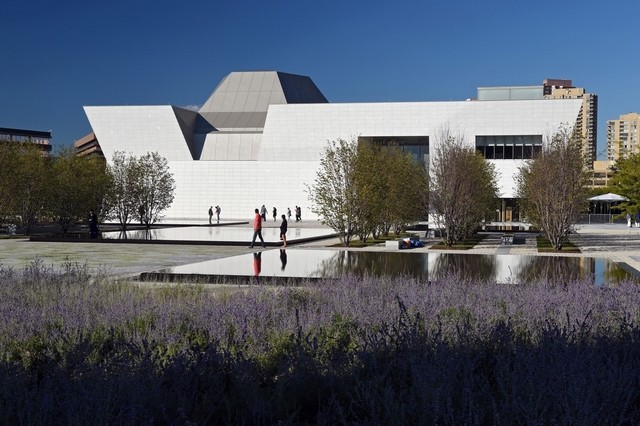 Between wooded ravines north-east of downtown Toronto in Canada, a cone jutting upwards from beige limestone shares a seven-hectare site with a massive rectangle in elegant white granite that resembles an open box. Both structures form a bridge between the tradition and culture of the Islamic world and the present and future of Canada.
Between wooded ravines north-east of downtown Toronto in Canada, a cone jutting upwards from beige limestone shares a seven-hectare site with a massive rectangle in elegant white granite that resembles an open box. Both structures form a bridge between the tradition and culture of the Islamic world and the present and future of Canada.
The Aga Khan Museum, the 4,370-square-metre chiselled white form, opened to the public on Thursday. Clad in Brazilian granite, it houses the collection of the Aga Khan, the imam of the Ismaili community, in a structure designed by the Japanese architect Fumihiko Maki. Across an ensemble of pools and trees stands the Ismaili Centre, a mosque and other community offices designed by Charles Correa, the dean of Indian architects, who collaborated with Le Corbusier decades ago on the modernist buildings of Chandigarh in India.
In the soft September light, the structures are luminous. In the evening, the buildings are reflected in wide pools, part of gardens designed by the Lebanese landscape architect Vladimir Djurovic.
Booming, sprawling Toronto, where tower blocks under construction jostle for space, lacked a contemplative cultural site. Now it has one in the new garden campus.
It also lacked much in the way of art from Islamic lands. Now it has 1,000 works – from Mughal paintings to ceramics, from rugs to Persian manuscripts, some of which travelled to Dubai for an exhibition in March. An ambitious acquisition effort promises even more to come.
The architectural ensemble, a US$300 million (Dh1.1 billion) project realised without any state funding, is a gift from Canada’s Ismaili community, which numbers about 100,000, more than half of whom live in the Toronto area.
Original article by David D’Arcy
Continue reading at The National:
The new Aga Khan Museum in Toronto is an oasis of calm and reflection



















Comments